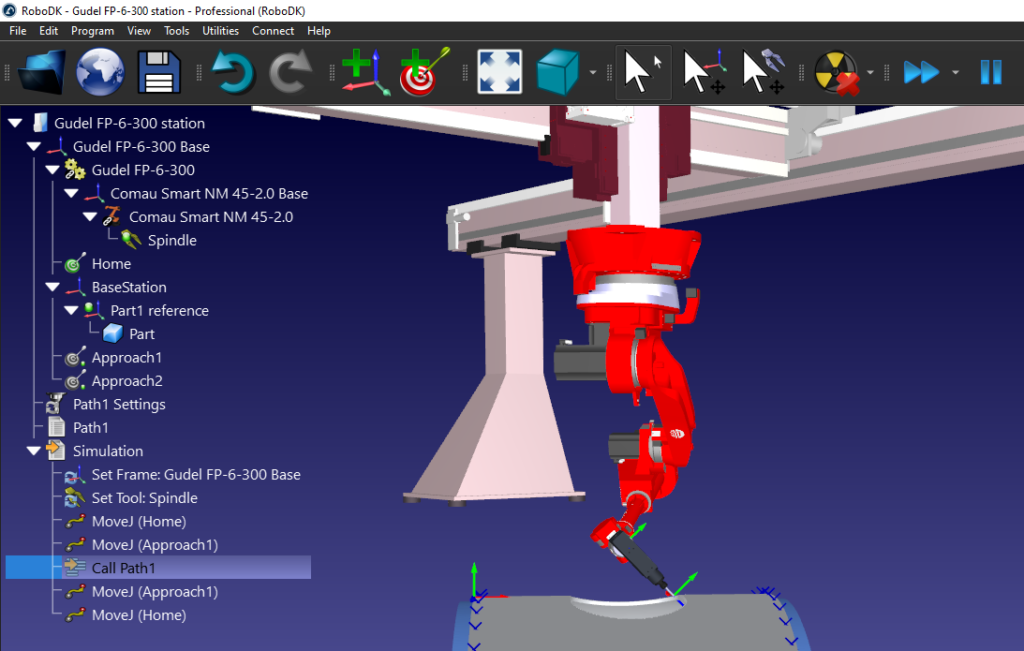Fewer people are getting into engineering, which means a shortage in the workforce for manufacturers.
How can we get enough good people into our teams?
Could introducing robot programming be a good way to attract quality people?
We are reaching a crisis point in manufacturing. According to industry research, the US manufacturing industry alone is facing a skills shortage of potentially 2-million workers by 2025.
For those of us working in manufacturing, this is a concern. If we can’t get good people into our teams, how can our businesses continue to grow?
The difficulty of finding good people
If you have tried to hire new people for your manufacturing business, you may have experienced how challenging it is to find and retain good people.
Not only are there fewer qualified workers to fill the roles in the first place, but competition is also high and many engineers move jobs every few years.
This problem is confounded by the fact that too few people are going into engineering in the first place. The National Association of Manufacturers has recently launched a new campaign to try to attract more Generation Z and Millenials to manufacturing by 2025.

But, 2025 is still a long way off. Most of us need good people long before the effects of the campaign will start to be felt.
How can we attract the right people to our companies (and keep them) when there is so much competition?
What makes a job offer attractive to engineers
There are a whole host of different factors that influence people’s decision to accept a job, including location, pay, responsibility, etc.
However, job applicants are increasingly more likely to work for a company if they can see that it aligns with their values and offers to help them grow in their careers.
The ways to make a job offer attractive are sometimes quite surprising. According to SESI Jobs one way to encourage people into a role is to “lower the entry-level expectations” (i.e. require less previous experience or qualifications) and then offer training for the position.
How training can counteract the workplace shortage
Offering training as a core part of the job is a benefit both to you and to the job applicant:
- It benefits you and your business — The shortage of skilled workers makes it very difficult to find people with the exact level of skill that you need for the position. Training allows you to match your needs whilst widening the pool of potentially good candidates for the position.
- It benefits the candidate — Applicants to the position will be able to see immediately how the job will help them continue to grow in their career. They will also recognize from the outset that you are committed to their continuing professional development.
As Bob Waldo, Senior Recruiter at LiquidHub says “If a candidate has 80 percent of the skills the job requires, they are qualified. Hire them! They will learn the [other 20 percent] in a shorter period than it will take you to find the perfect fit. You get a much more motivated employee than the guy who has ‘been there, done that, got the T-shirt to prove it.”

How to Make Your Job More Attractive with Robot Programming
One skill that is perfect for this type of training is robot programming. Robotics is still a very new technology for most manufacturers. Robotics skills are also still relatively uncommon so it can be hard to fill those jobs which require them.
Traditionally, the only way to start using robots in your business was to use an external robot integrator or hire someone with a lot of experience in robotics. These days, robotic systems are much easier to deploy than they ever were before. Even if you do require some input from an integrator, robot programming skills can be a great option for training.
Here are some things you should think about when looking to incorporate robotics training into your business:
Roughly Identify the Robotics Skills that You’ll Need
Start by identifying the rough robotics skills that you will need. If you have never used robots before, there will be some informed guesswork here. If you are already using robots, the list of skills will be easier to compile. This will help you when looking at potential training and candidate abilities.
Identify the Required Soft Skills for Robotics
Robotics is a very multidisciplinary field and its uncommon to find an engineer with all the necessary hard skills. Because of this, good roboticists are great at soft skills like active learning and problem-solving. Identify which soft skills are necessary for working with robots so that you can look out for them in candidates.
Ascertain Which Skills Are Possible to Train
Some robotics skills are easier to train than others. For example, simple robot programming with a good programming system can be very easy to learn.
Decide which of your required robotics skills are going to be possible to train and which your job candidates will need to have already.
Find Systems Which Make Programming Easy
Some robotic systems are notoriously difficult to program, which means the training will take longer. Your training will be quicker and much more effective if you use an easy-to-use robot programming system.
A good offline programming package compatible with multiple robot manufacturers will give your new team members skills that they will continue to use for the rest of their careers. It will also allow them to program robots much more quickly saving time in your manufacturing process.
Remember, You Don’t Need to Know Everything
The reason that you are bringing on new team members and training them in robotics is so that they can become the robotics experts in your team. Remember that you don’t need to know everything about robotics and robot programming before you bring them on.
As long as you demonstrate that you are open to sending them on robotics trainings and continuing to grow their skills as an engineer, they will let you know when there is a topic they need to be trained in. In turn, this will attract more, better people into your team and could counteract the effects of the skills shortage.
How have you been affected by the skills shortage? Tell us in the comments below or join the discussion on LinkedIn, Twitter, Facebook, Instagram or in the RoboDK Forum.





